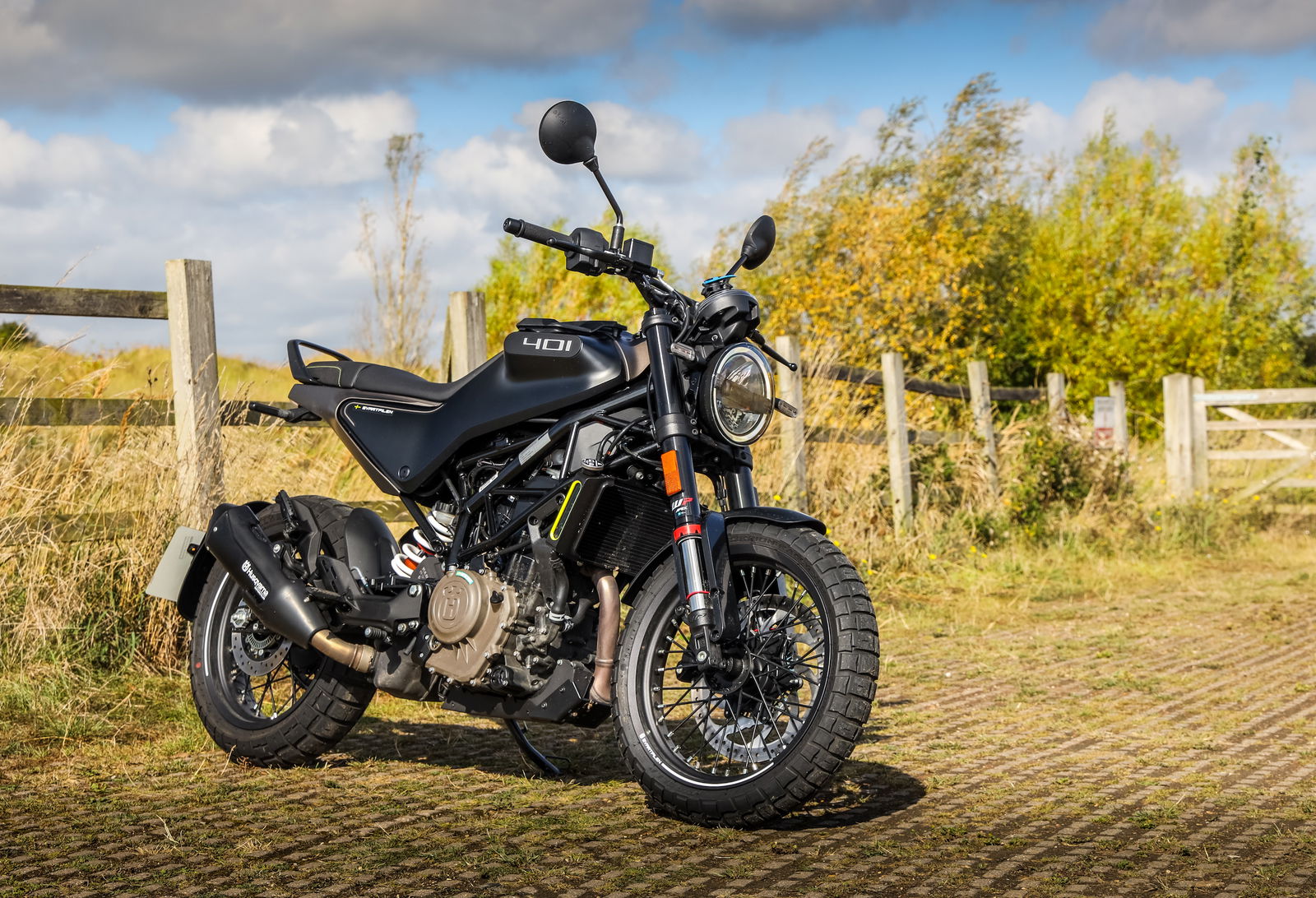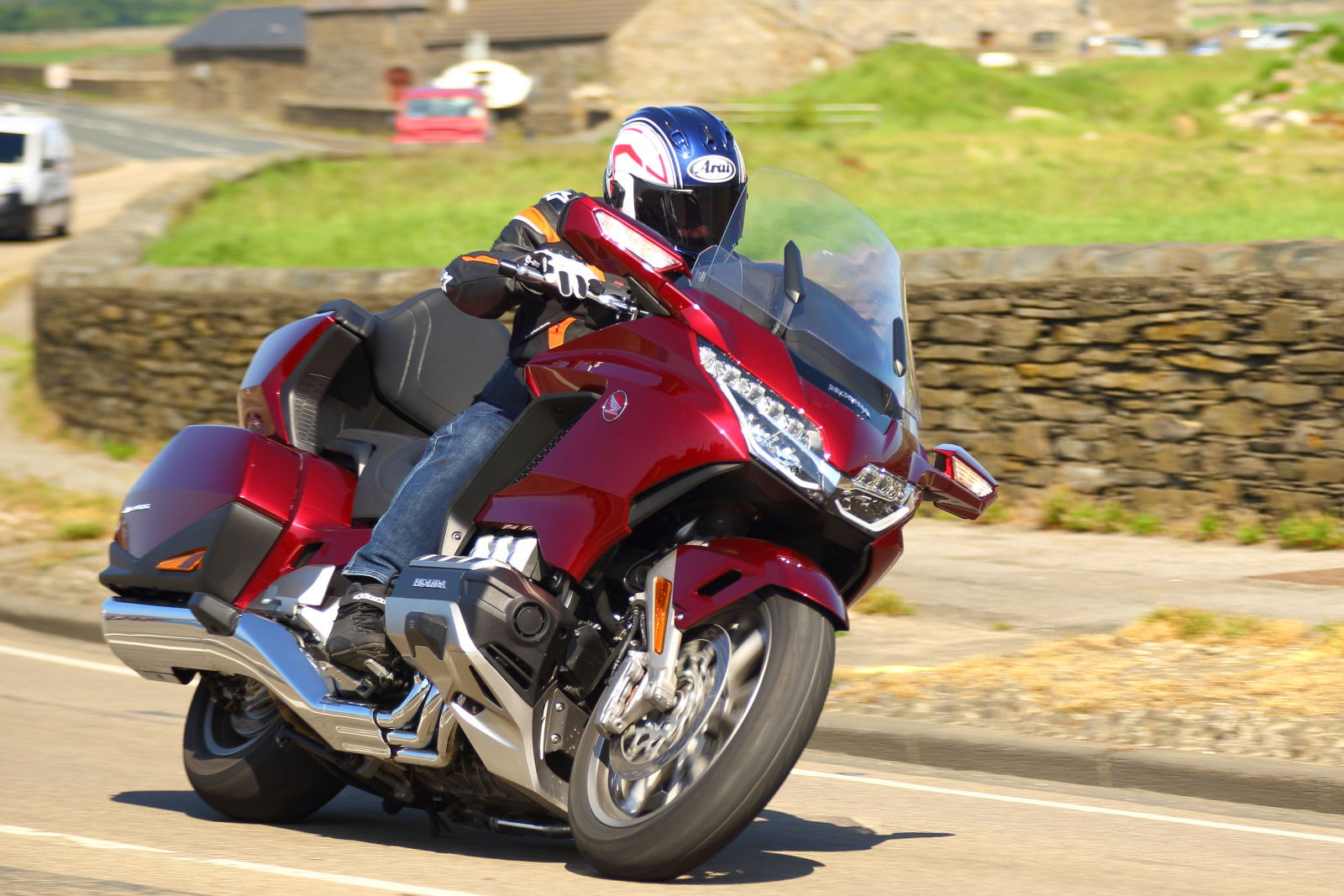Himalayan 2018 review
The Royal Enfield Himalayan is well-suited to Sunday ambling and gentle trail bashing, but soft engine and brakes let it down

The Royal Enfield Himalayan is a small bike which can take gentle trails with ease, but it's not a particularly hardy specimen.
PREPARATION is key to any successful motorcycle adventure.
It will take you on the best roads, teach you where to avoid and ensure you remember all the essentials – essentials like trousers, for example.
Unfortunately trousers didn’t make the cut on a recent trip I took with my boyfriend/photographer/mechanic Leo. And Leo was left with only his Cordura suit to preserve his modesty as we headed out for dinner.
Luckily, we weren’t on any great riding odyssey. Instead we were testing Royal Enfield’s Himalayan on a three-day tour around England’s answer to its namesake, the Lake District. And while Leo was reunited with his jeans a couple of days later, the situation stuck in my mind as somewhat apt considering the bike I was riding.
Royal Enfield Himalayan 2018: Design
Now, I’m not saying Royal Enfield’s Himalayan has forgotten its trousers, but it’s certainly lacking something in that department. Top-end torque, high-speed handling, 21st century electronics – you name it, the Himalayan doesn’t have it. But it doesn’t profess to be the best at anything. In fact, the humble Himalayan doesn’t boast any outrageous claims – apart from being ‘India’s first true adventure machine’. It’s not out to rival the Triumph Tiger 800, the Suzuki V-Strom 650 or even the lightweight Kawasaki Versys X 300, instead occupying a Shoreditch-styled league of its own. And its basic nature is actually quite endearing.
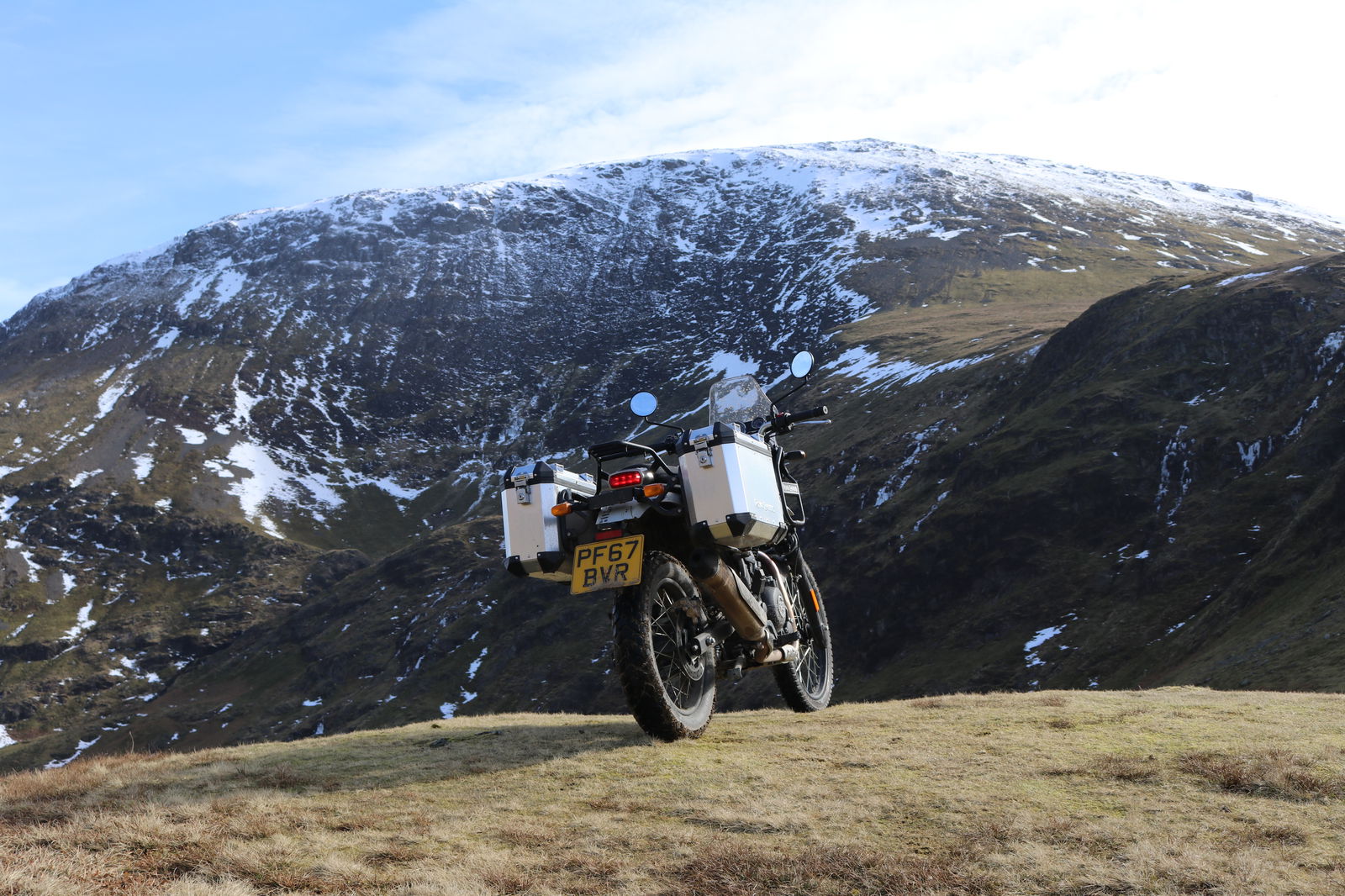
Designed with the mountains in mind, the Himalayan promises adventurous capability in a simple, affordable package. It features a 411cc single cylinder air-cooled, fuel injected motor, making 24.5bhp and 23.6lb-ft at 4,250rpm. Housed in a half duplex split cradle frame, this unit is the manufacturer’s first single overhead cam engine, and hopefully it will follow in the Royal Enfield trend of being bulletproof.
Royal Enfield Himalayan 2018: Engine
Early on our 250-mile road test it became apparent that the Himalayan isn't suited to long motorway slogs, for the aforementioned reasons. Finger-numbing vibrations thrum through the bars, while the 21-inch front wheel developed a tankslappy twitch at anything above 75mph. When it came to overtakes in higher gears, the little bike didn't have the grunt to do so swiftly and safety and I frequently found myself getting left behind by Leo on his BMW F800GS. With the engine’s long-stroke configuration, torque fades significantly higher up the rev range, leaving the bike feeling a little puffed-out.
The clutch is light and acceleration is smooth from the get-go, although you need to keep those revs up as I found my test bike prone to stalling. Surprisingly, the Himalayan has a good ol’ fashioned choke and while we didn’t need to put this to the test, we did have to bump-start the bike after leaving the headlight on for a 10-minute photoshoot.
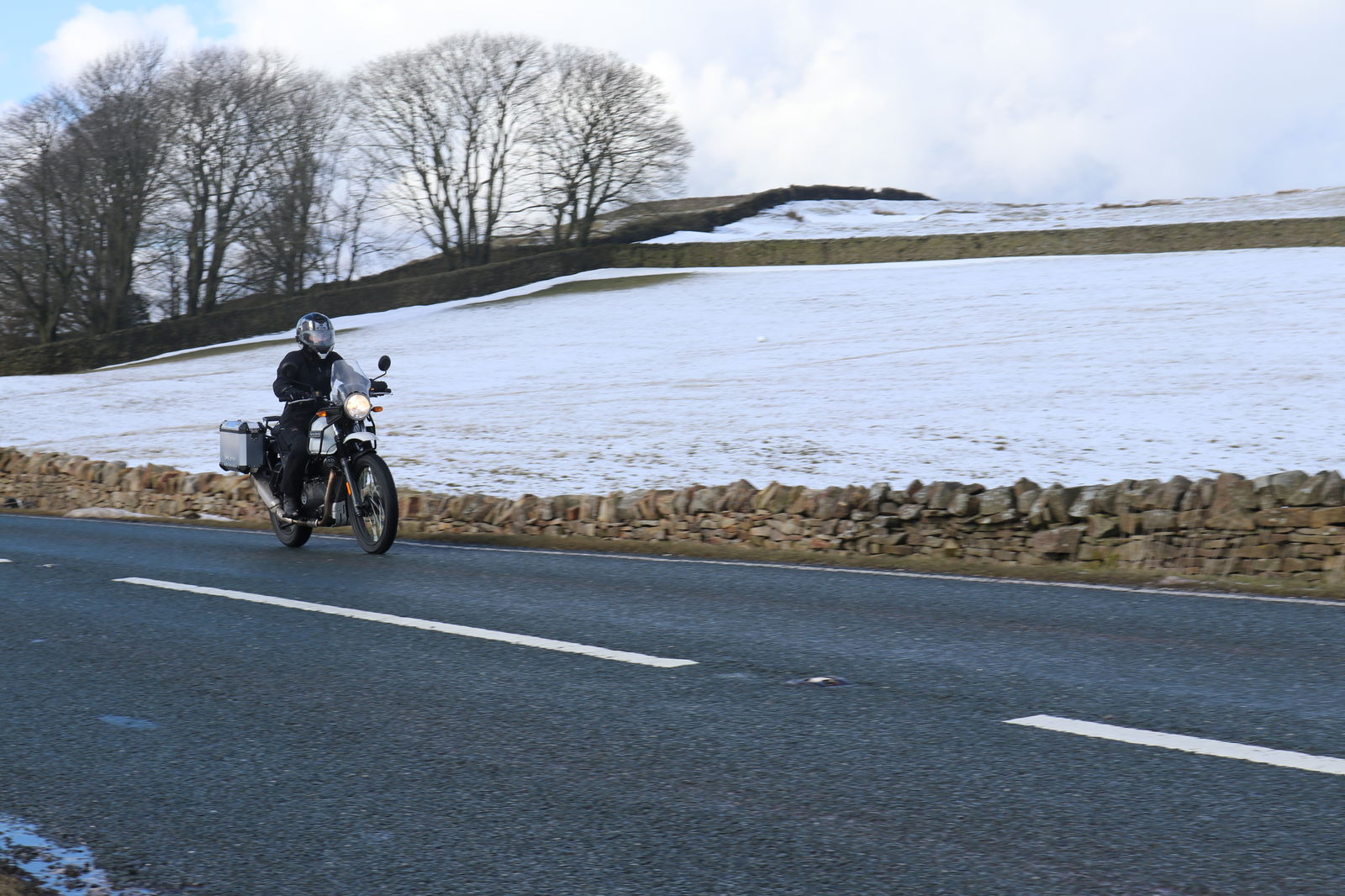
Off the motorway and the Himalayan was immediately happier. It coped admirably on the twisties, turning in relatively smoothly and sharply and felt well-balanced at slow to middling speeds. However, that 191kg wet weight made its presence known when accelerating up hills or out of corners. The basic spec suspension – conventional telescopic 41mm forks and a monoshock at the rear – was solid and unforgiving, and I felt every blemish (of which there was plenty following February’s big freeze) on the broken Tarmac, while the front felt somewhat disconnected from the road.
Royal Enfield Himalayan 2018: Brakes
Brakes are accounted for by a twin piston calliper up front, grabbing a 300mm disc and a single piston calliper with a 240mm disc at the rear. Produced by ByBre, Brembo’s Indian brand specifically dedicated to small-to-medium displacement machines, these brakes seriously lack bite and I found myself adjusting my stopping distances to suit. Dual-channel ABS is standard and while unobtrusive on the road, was a little overzealous off.

Royal Enfield Himalayan 2018: Handling and Suspension
Wide handlebars with good lock, a low seat and low centre of gravity boost manoeuvrability, and slow speed riding, which was great off-road. And off-road is where the Himalayan excels. I’m not talking Dakar-type terrain, but instead the gravelly tracks you’ll find crisscrossing England’s green and pleasant land.
The off-road standing triangle was perfect for my five feet and seven inches, but I imagine taller riders would struggle. The engine’s ample low-down torque came into its own in deeper sections of gravel, allowing me to pull away in second.
Longish suspension travel of 220mm upfront (that’s 75mm less than a Honda CRF250 Rally, but 20mm more than a BMW G310GS) and 180mm at the rear absorbed big bumps, but it still felt a tad too firm for my 56kgs.
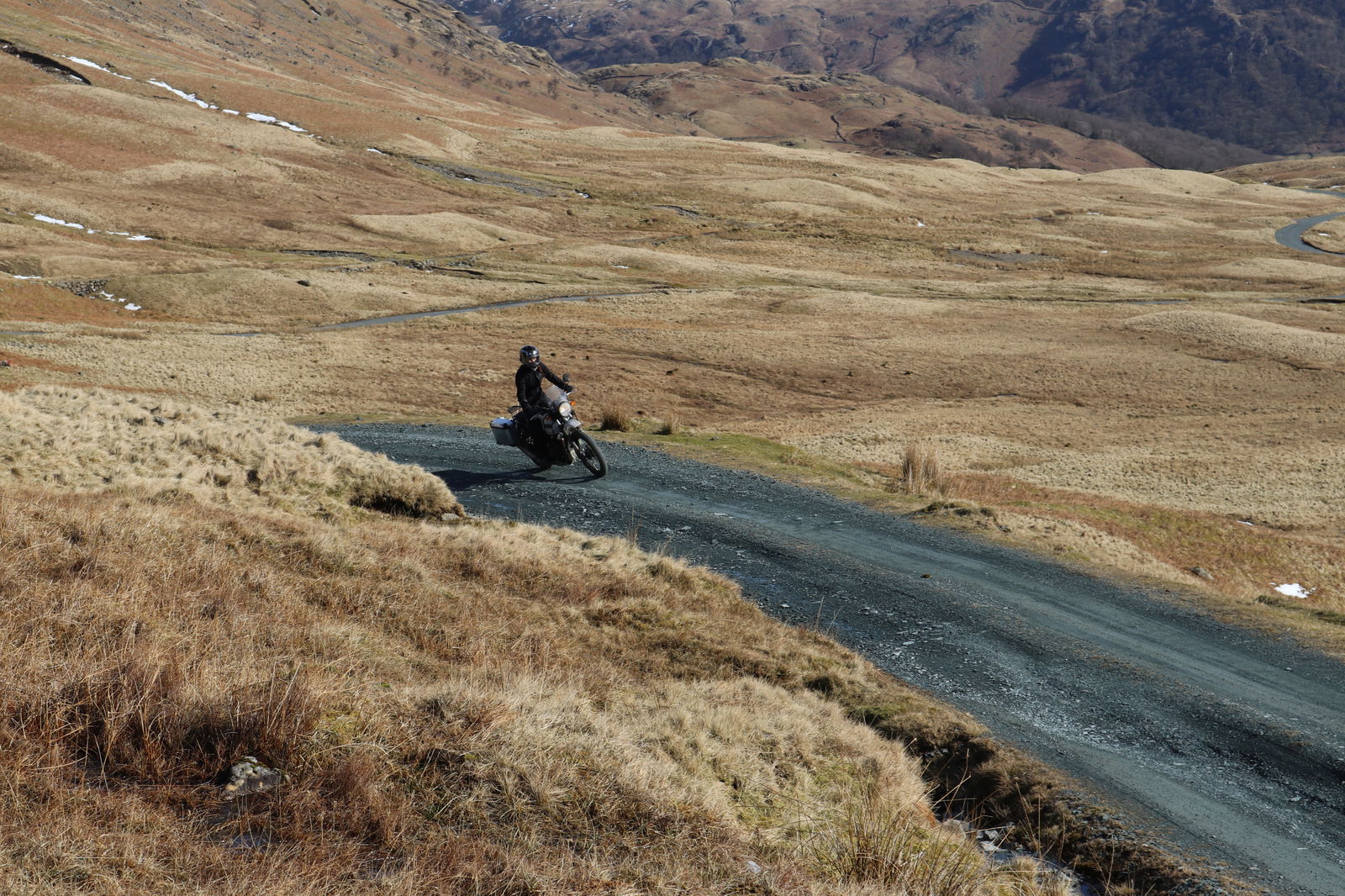
Pirelli MT60 rubber looks good and perfectly matches the Himalayan’s off-road ability. And speaking of looks, the Himalayan is at home off the beaten track. With the front and rear auxiliary frames, and a 15-litre fuel tank it looks rugged and utilitarian, and somewhat bigger than its 400cc.
It has an undeniable adventurous capability, although questionable build quality makes me wonder whether it has the durability to make a round-the-world machine. While RE has recently opened a UK technology centre, the Himalayan pre-dates this and the rough welds, leaky pannier, condensation in the speedo, weird rattle at around 5,000rpm, paint-brush finish and poorly fitting pannier-frame shows it.
Another sticking point was the digital dash compass, which appeared to have got its East and West confused… However, a Royal Enfield associate promised us that this was just a ‘calibration issue’ and that to fix it you just had to ‘ride a couple of figure of eights to allow it to get its bearings’. Interesting…
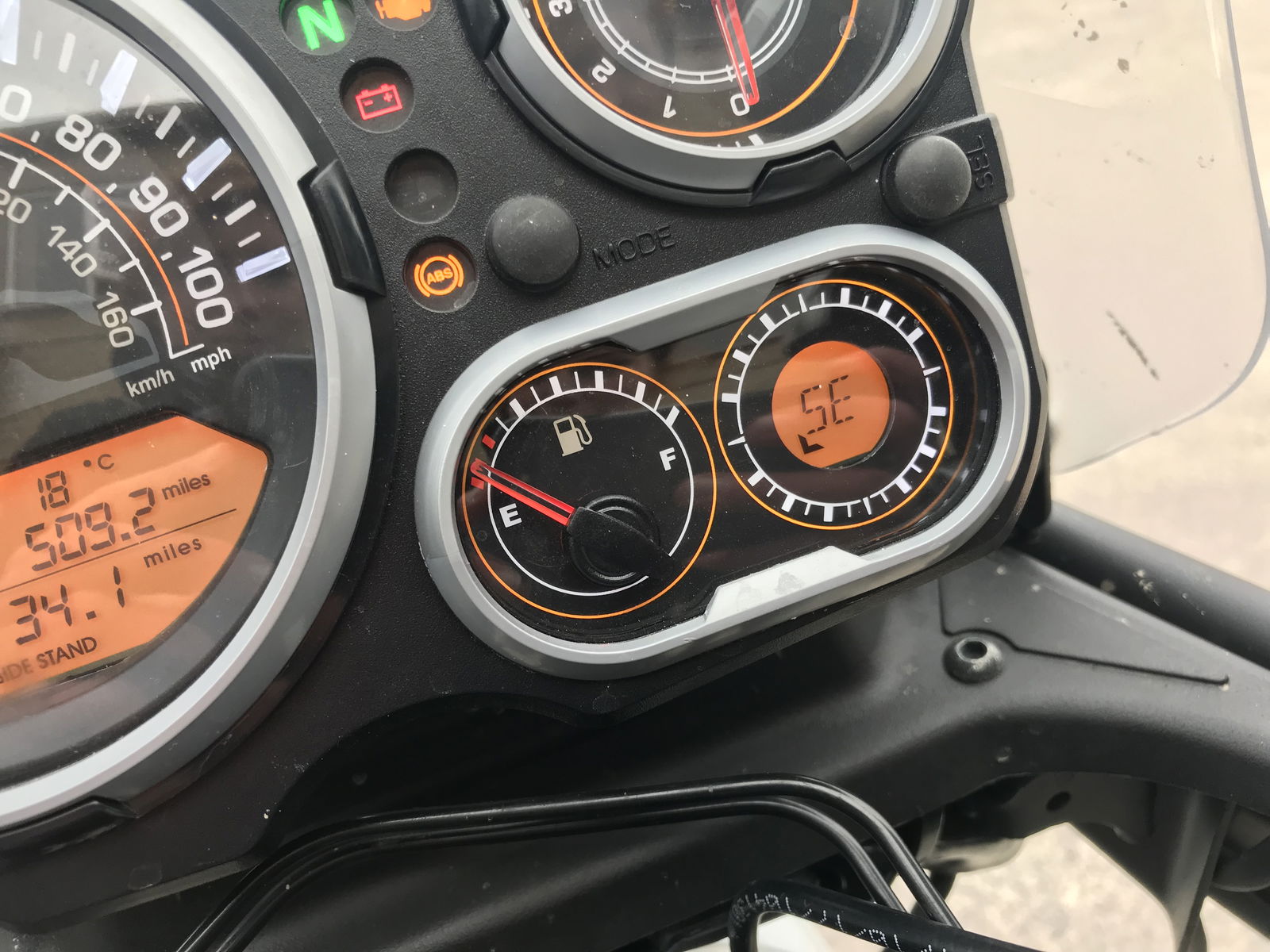
Should I buy the Royal Enfield Himalayan 2018?
I’ve got to be honest: when I first approached the Himalayan I didn’t know what to expect, especially given the delays that had plagued the model’s arrival in the UK and talk of snapping chassis, gearbox failures and flaking paint inside the fuel tank in its native market. But the bike that awaited me at the UK importer’s Chorley HQ was reportedly a different variant to that sold in India.
And after two days of exploring the Lakes – on and off-road – I can attest that while the Himalayan is far from flawless, it certainly isn’t bad – especially considering its £4k price tag.
Good points include its awesome looks, quirky nature, low seat height, easy handling and competitive price. While it may lack the tech of a Tiger of the refinement of a GS, it offers a stylish, affordable entry into adventure motorcycling. And it also offers a different approach to these bikes. Think of it as a quirky café racer for the mountains, a bike that is as home in Shoreditch as it is in Snowdonia.
It’s surprisingly capable, in moderation, and if high speed riding isn’t your cup of tea then you’ll do just fine on the Himalayan. After all, it’s not a performance bike, but rather an enthusiast’s machine. And with that budget price tag, I imagine a lot of people will be enthusiastic about it.

Royal Enfield Himalayan 2018: Specifications
- Model tested: Royal Enfield Himalayan
- Price: £3999
- Engine: 411cc single cylinder, air cooled, four stroke, SOHC
- Power: 24.5bhp
- Torque: 23.6lb-ft @ 4,250rpm
- Kerb weight: 191kg
- Seat height: 800mm
Photographs by Leo Westland
